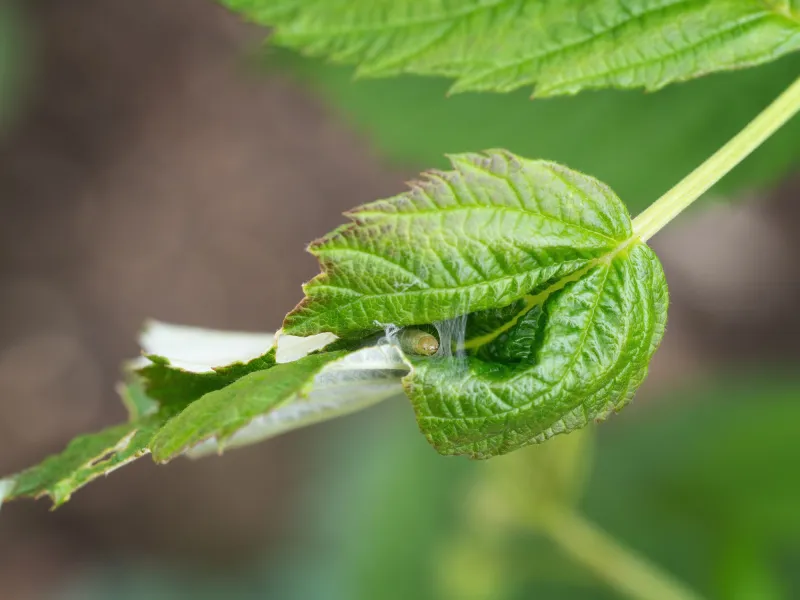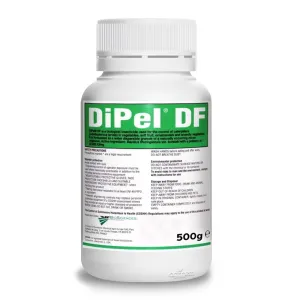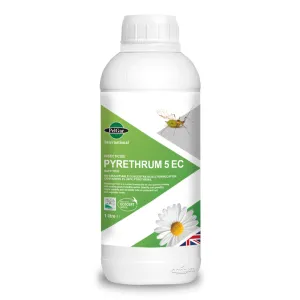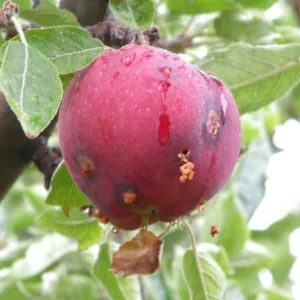Often thought of as the poor relations of butterflies, moths are prevalent in the UK with more than 2,500 individual species gracing our gardens.
Moths are an important species for supporting pollination and the food chain, but some can also wipe out crops and destroy plants.
Moth caterpillars can consume, damage, or deform a surprising amount of fresh foliage, fruits, vegetables, and plant material.
There are a number of problematic moth species known as an enemy to British gardeners and it may help to understand the behaviours of some of the most common before deciding on the best control methods. These include:
Codling Moth
Codling moths primarily affect apples but are also fond of pears, and less frequently, walnut and quince. They lay their eggs on the fruit from where their larvae hatch and burrow into the fruits leaving damaged fruits in their wake.

Exit damage from a codling moth caterpillar
Codling moth grubs can destroy the entire crop of an apple tree causing early ripening, fruit falling, malformed fruits containing black or brown frass, and fruits with a distinctive black exit ‘hole’ on the outside.
Apples afflicted by Codling moth are commonly known as ‘maggoty apples’ and while they are safe to eat, the name and visual damage are enough to put most people off eating them. Codling moths appear from May to June.
Leek, Pea and Plum Moths
Leek moths attack leeks, onions, chives, garlic, and shallots. They invade these vegetables in spring and again later in the summer. The caterpillars tunnel into leaves leaving brown patches from feeding damage. They can also cause deterioration to the stem and bulb leaving impaired or inedible vegetables behind.
Pea moth caterpillars feed on the developing peas inside the pods leaving damaged peas and frass inside the pods. In a similar way to codling moth caterpillar damage, pea pods may appear to ripen early and drop from stems.
Plum moths produce caterpillars that happily munch through plums, damsons and gages leaving similar damage to the codling moth caterpillar – misshapen frass-filled fruits. They are active from late May to July and like Leek moths, can produce a second generation later in the summer.
Winter and Tortrix Moths
Winter and tortrix moth caterpillars both defoliate plants - with winter moths favouring deciduous trees and shrubs, and tortrix moths preferring roses, flowering cherries, hornbeams, barberries, raspberries, hawthorn and blackthorn.

Tortrix moth caterpillar in a raspberry leaf
Like most other moths, the caterpillars are active in spring. However, adult winter moths lay their eggs from November to January. Spotting them in winter and eliminating them can help control caterpillar outbreaks in spring.
Moth control
There are a variety of controls available to stop moth damage in the garden. Some gardeners prefer to watch the moths at night, spot where they lay and then manually remove eggs, or crush caterpillars once they’ve emerged. Anyone who has grown cabbages and sat watching cabbage white butterflies lay their eggs may already be familiar with this method!
If the slow manual process isn’t for you, there are other methods you can try. Codling moth lures and traps have proved to be quite successful in reducing caterpillar damage. Agrigem’s castellation traps are chemical-free and can be used in organic gardens.
They work by luring the male moths into the trap using a long-lasting pheromone that simulates the smell of the female moth. Reducing the male moth population will reduce the amount of caterpillars that can go on to damage fruits.
Biological controls like DiPel and natural organic controls like Pyrethrum (for use on salad crops in a glasshouse) can be very successful in stopping damage from moth caterpillars.
DiPel will control caterpillars in vegetables, soft fruit, ornamentals and amenity vegetation. It is a natural insecticide containing the active naturally occurring micro-organism bacillus thuringiensis kustaki ABTS-351.
Interrupting the lifecycle
Like most pest outbreaks, preventing damage from moth caterpillars is most effective if you can stop them getting a hold in the first place. To really get on top of this approach, you need to break the moth lifecycle. There are several things you can try to achieve this, including:
- Covering susceptible plants with insect proof mesh.
- Practising crop rotation where possible.
- Checking around the base of apple trees and under bark for codling moth cocoons.
- Encourage natural predators like birds and ground beetles.
Get in touch with our expert technical team for free moth control advice and guidance.






